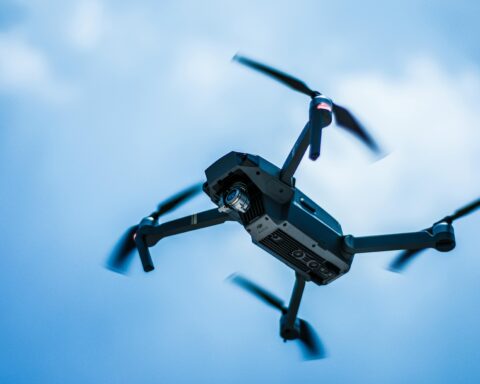The Port Authority of New York and New Jersey is exploring the possibility of adding drones to its logistics infrastructure portfolio.
The multi-jurisdictional agency, which oversees much of the region’s air, land, rail and maritime transportation network, including John F. Kennedy International Airport, LaGuardia Airport and Newark Liberty Airport, will partner with Skyports Drone Service for a multiyear feasibility study to evaluate how drones can be used to deliver “middle-mile” packages to its ports.
Middle-mile logistics refers to the segment of the supply chain between a distribution center or warehouse and a retailer or local fulfillment center, but not directly to the consumer.
In May 2023, the Port Authority first tested the viability of delivering cargo across federal, state and local jurisdictions via drone by flying a box of Girl Scout cookies between Brooklyn and New Jersey.

NUAIR, a New York-state-based nonprofit provided the pilot and drone that was used in the test, Port Authority spokeswoman Amanda Kwan told Government Market News.
After the test, the agency requested proposals from companies interested in making drone cargo delivery in the region a reality.
In late 2023, the Port Authority selected two private companies to explore routes for uncrewed aircraft to move small, high-value packages across the region: Skyports Drone Services – a U.K. drone airline that operates survey, inspection and logistics drone services – and Elroy, a drone manufacturer named after a Jetsons cartoon character.
Skysports has used drones for delivery in more difficult terrain in the past. Norwegian energy firm Equinor hired the company to trial electric drone deliveries to North Sea oil rigs.
To pay for the study, the Port Authority will use funds from revenue generated from facility operations from its bridges and tunnels between New York and New Jersey, user fees from the airports and the bus terminals, fares on its rail transit system, rent from facilities, consumer services and from retail stores and credit markets.
“The Port Authority’s annual budget includes no tax revenue from either the states of New York or New Jersey or from the City of New York,” Kwan said. “The agency raises the necessary funds for the improvement, construction or acquisition of its facilities primarily on its own credit.”
The Port Authority and Skyports’ feasibility study will identify regulatory, technical and operational issues along with commercial pathways across its jurisdiction for drone services, with an initial focus on middle-mile applications.
“The Port Authority, with its extensive portfolio of maritime and aviation assets, including three of the busiest airports in the US, and the nation’s second-largest port by total cargo volumes, is well positioned to integrate UAS applications in a highly complex operating environment,” Alex Brown, Director of Skyports Drone Services said in a statement. “We look forward to partnering to explore the feasibility of drone operations in the Hudson River airspace, onboarding initial customers, and producing an actionable roadmap for UAS in New York City, with a view towards launching proof-of-concept operations within the Port District.”
According to the Federal Aviation Administration, drones that weigh less than 55 pounds can fly for work or business by following Part 107 guidelines.
The FAA prohibits drone takeoffs, flights and landings in certain airspace. State, local, territorial, or tribal governments may also restrict drone takeoffs and landings. These jurisdictions can use FAA-provided “No Drone Zone” signs to identify areas where local flight restrictions apply. No Drone Zones only restrict taking off or landing and do not restrict flight in the airspace above the identified area.
There are also areas with “Temporary Flight Restrictions” (TFRs) that define a certain area of airspace where air travel is limited for a period and may be in place for different reasons. Typically, these areas include major sporting events, presidential movements or federally designated security sensitive areas.
Although local laws or ordinances may restrict where drones can take off or land, they typically cannot restrict them from flying in airspace permitted by the FAA. Local governing bodies establish local laws and ordinances and are separate from FAA regulations.
A few drone operators have recently been granted permission by the FAA to operate without the use of visual observers beyond the line of sight.
In September 2023, the FAA authorized Zipline International, Inc., to use drones to deliver commercial packages around Salt Lake City beyond the operator’s line of sight without visual observers. In the same month, the FAA approved UPS’s small package delivery drones, and uAvionix’s Rapace can use Vantis Network to test its detect and avoid technology.
All news and information on this site is provided by the team at Strategic Partnerships, Inc. Check out this short 1-minute video that provides a quick overview of how we work with clients.








